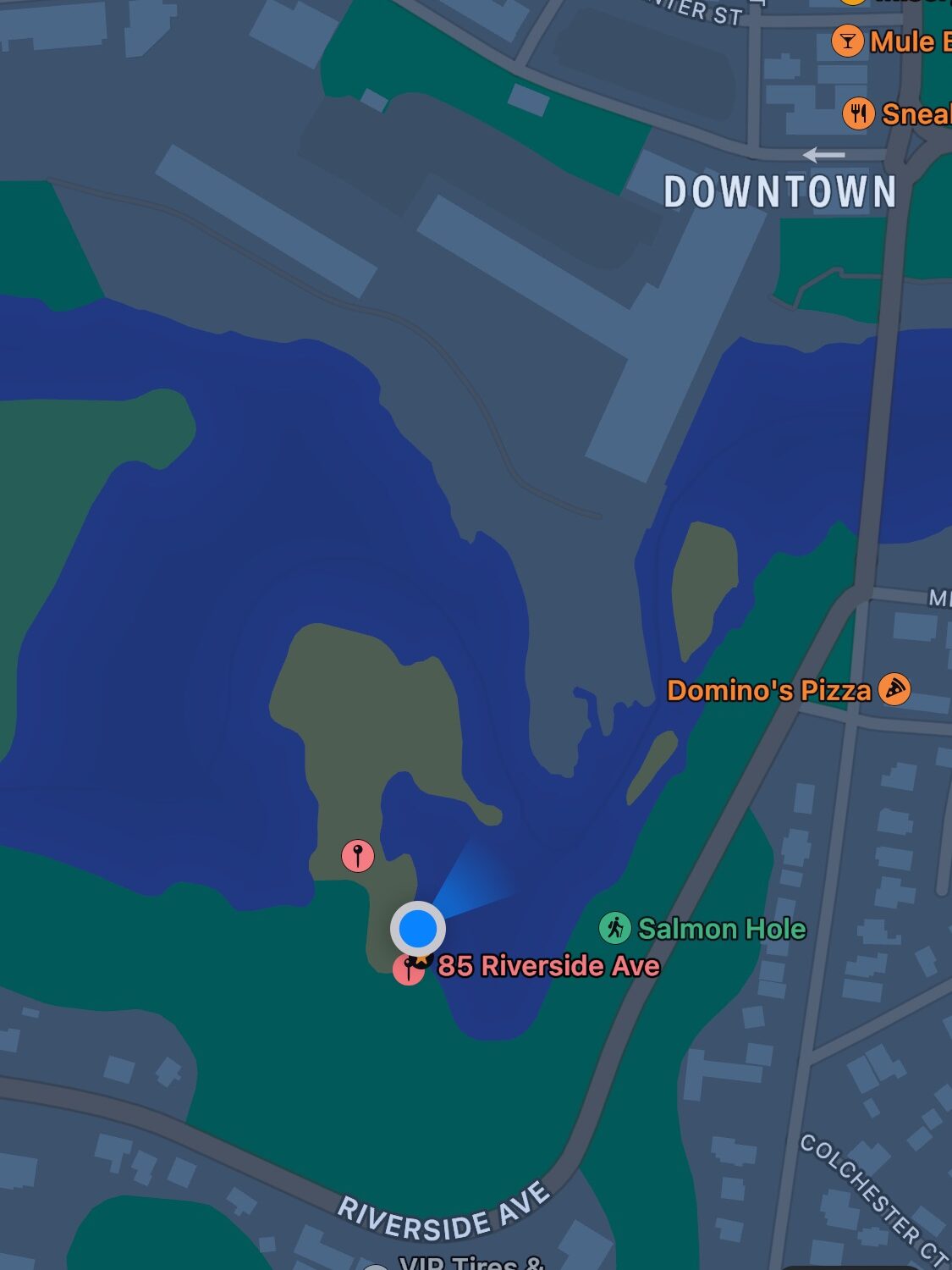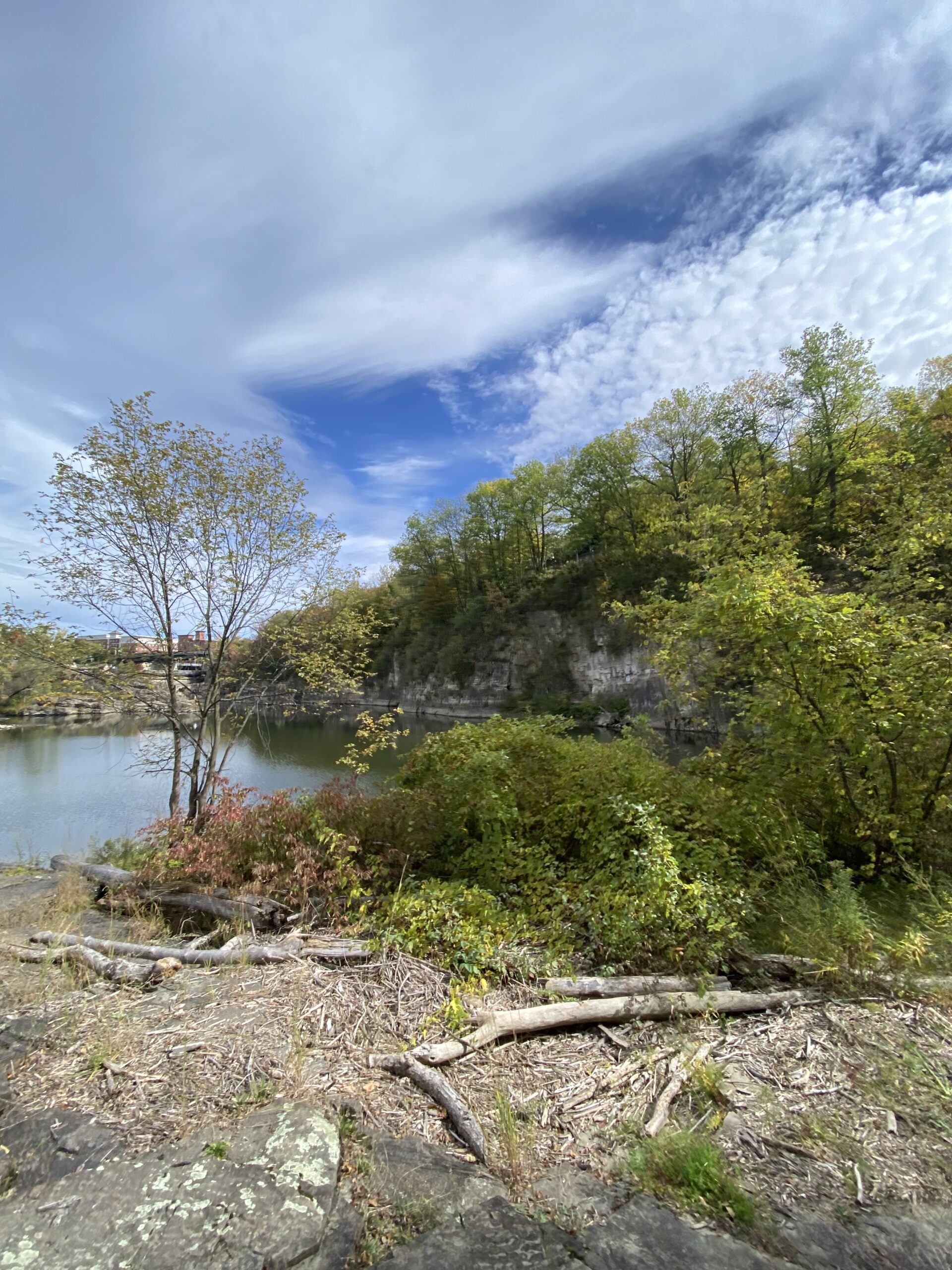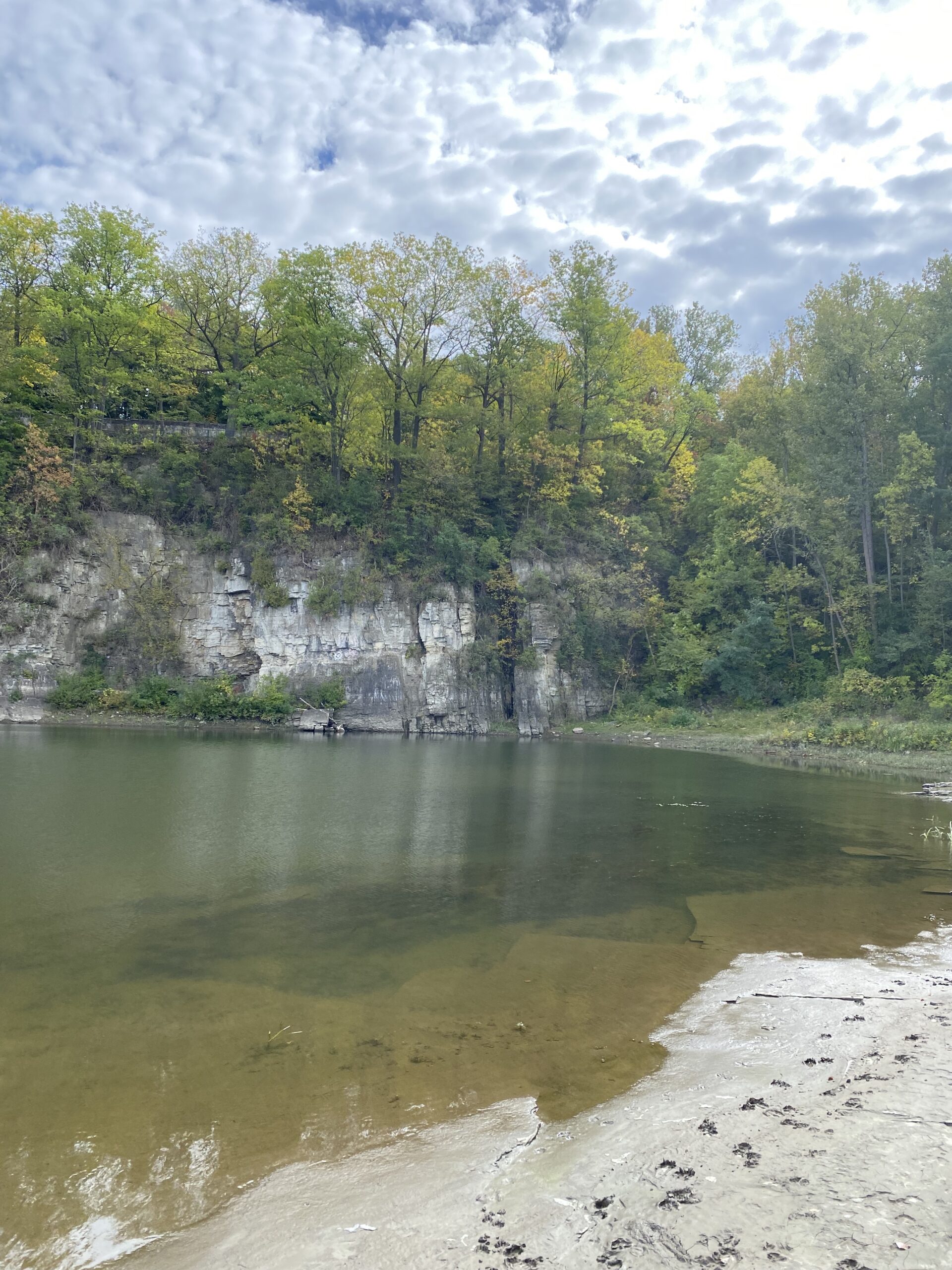For my phenology project location, I chose Salmon Hole. It is a fifteen-minute walk from my dorm (Trinity Campus) which was a major component in selecting this spot during my initial search. Every time I would go for a walk in the Winooski area, I loved stopping on top of the bridge over the Winooski River to stare at the waterfall and the fishermen on the other side. Looking closer at Salmon Hole, one can see that there is a whole new world on the edge of the Winooski River in the middle of such an urban area of Chittenden County.

To reach my spot in Salmon Hole, I need to take a footpath to reach the river’s edge. The vegetation along this footpath consists of tall, woody plants, ferns, and long grasses. The forest was primarily made up of box elders, green ash, and easter cottonwoods. Some paper birch trees and Norway maples were also observed. Common buckthorn and honeysuckle were the most common invasive species witnessed. There were stone stairs on the footpath that lead down to the river’s edge. These stairs housed plenty of mosses, lichens, and some bittercress through the cracks of the steps.
Once I reach my spot along the water’s edge, the vegetation changes drastically. The forest changes dramatically to rock. The most common vegetation includes small shrubs and long grasses. Fungi grows on dead trees fallen on large rocks. Moss is found on rocks and ferns and flowers grow through cracks. The most prevalent woody plant around my spot is dogwood. Asters and unidentifiable plants likely related to roses were observed.



The change in vegetation from downtown Winooski, to the footpath, to the river’s edge is dramatic and fascinating to observe. I look forward to watching these environments change together throughout the year!
Hi, this is a comment.
To get started with moderating, editing, and deleting comments, please visit the Comments screen in the dashboard.
Commenter avatars come from Gravatar.